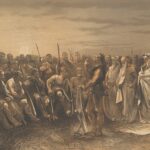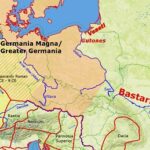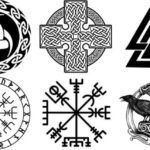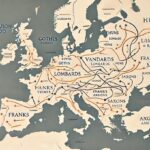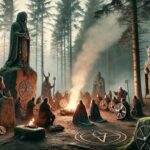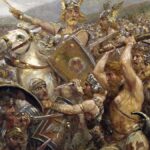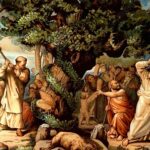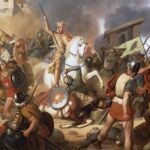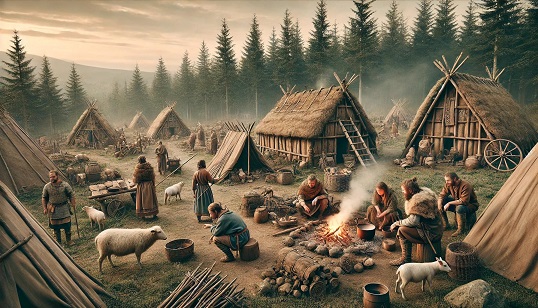
When we think of the Germanic tribes, it’s easy to picture warriors and battles. But behind the armor and legends was a society with rich cultural traditions and daily routines shaped by nature, family, and survival. Understanding the daily lives of these ancient peoples reveals a fuller, more human portrait of early German history—and offers insight into the roots of medieval European civilization.
Social Structure and Roles
Germanic society was hierarchical and clan-based. At the top were tribal chieftains and warrior elites who commanded respect and led in war and peace. Freemen made up the bulk of the population and had rights in tribal assemblies. Slaves, often captured in raids or war, held no political rights.
Gender roles were relatively defined, but not necessarily restrictive. Men were primarily warriors, farmers, and leaders, while women managed households, bore children, and played spiritual and oral-historical roles. Women could inherit property and occasionally wield political influence.
Homes and Settlements
Germanic tribes typically lived in wooden longhouses with thatched roofs. These homes housed extended families—and often livestock—in one structure. Villages were small, with homes arranged around communal spaces or farmland.
Construction used local timber and mud, with animal hides and wool used for insulation and furnishings. A central hearth provided heat, light, and cooking space.
Settlements were often temporary or semi-permanent, particularly among migrating groups. However, some tribes developed larger, more complex fortified villages and trade centers over time.
Clothing and Appearance
Clothing was functional and adapted to harsh northern climates. Men wore tunics, trousers, and cloaks fastened with brooches. Women wore long dresses, aprons, and shawls, often adorned with jewelry.
Clothing was made from wool, linen, and animal hides, dyed with natural plant-based colors. Hairstyles and grooming were important for both sexes—combs, razors, and mirrors have been found in gravesites, indicating attention to personal appearance.
Food and Agriculture
The Germanic diet was largely agricultural, supplemented by hunting, fishing, and foraging. Key staples included:
- Barley, wheat, oats
- Vegetables like cabbage, onions, and legumes
- Fruits (apples, berries)
- Dairy from cattle, goats, and sheep
- Meat from domesticated animals and wild game
Mead and ale were common beverages. Meals were communal, often revolving around feasting during festivals or after successful hunts and raids.
Religion and Rituals
Germanic religion was polytheistic and animistic. Their gods reflected the forces of nature and life:
- Odin (Wodan): wisdom, war, and death
- Thor (Donar): thunder, protection, and fertility
- Freya: love, fertility, and battle
Sacred groves, springs, and trees were worshipped, and offerings—including animal sacrifices—were made to please the gods. Rituals marked solstices, planting and harvest seasons, and rites of passage like birth, marriage, and death.
Religious leaders may have included shamans, seers, or priestesses. Women were sometimes viewed as closer to the divine, with roles in prophecy and healing.
Laws, Justice, and Assemblies
Justice was rooted in oral tradition and administered by tribal assemblies, or things. These gatherings of free men debated disputes, punished wrongdoers, and made decisions about war or alliances.
Common punishments included:
- Fines (wergild)
- Exile
- Ritual penance
Dueling, known as the Holmgang, was used in some cases to resolve disputes. Honor and reputation were crucial, and violations of trust or kinship were serious offenses.
Education and Storytelling
There was no formal education, but oral tradition was essential. Elders, bards, and mothers passed on knowledge, myths, and moral lessons through stories, songs, and proverbs.
These tales preserved tribal history, genealogies, and heroic exploits. They later influenced medieval literature, such as the Nibelungenlied and Norse sagas.
Crafts and Trade
Germanic tribes were skilled in:
- Metalwork: forging weapons, tools, and jewelry
- Weaving and leatherwork
- Woodworking: constructing carts, homes, and tools
They traded with Celtic, Roman, and Baltic neighbors—exchanging furs, amber, salt, and crafted goods for Roman glass, pottery, and coins.
The daily life of the Germanic tribes was rich in tradition, resilience, and community. Far from being mere warriors, they were builders, farmers, storytellers, and spiritual thinkers. Their social customs and beliefs laid the groundwork for many aspects of medieval and modern German culture.
To explore more about these people, see The Origins of the Germanic Peoples, The Germanic Tribes, and Germanic Mythology and Pagan Beliefs.
